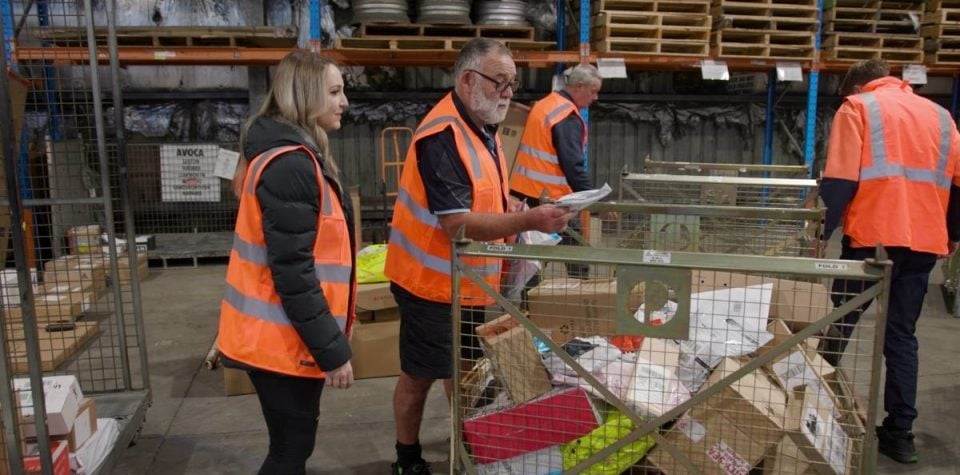Table of Contents:
- Why is Crowd Management Important?
- What’s Involved in Crowd Management?
- Effective Solutions for Crowd Control
- The Role of Logistics Software in Crowd Control.
- The Need for Effective Crowd Control
How logistics software can play an important part in keeping crowds flowing inand out of events and transportation hubs.
Managing large flows of traffic across bus depots, train stations, sports events, or airports can be a challenge. It’s vital to do so safely and efficiently, 24/7. Attempting to manage crowd control manually can place a significant drain on staffing and resources. In many instances, such as at large airports or central train stations, it’s simply unfeasible.
Fortunately, a range of innovative solutions exists today to help you keep control. In this blog post, we’ll dive into the world of crowd control logistics, exploring solutions that ensure safety, compliance with regulations, and a positive customer experience.
Why is Crowd Management Important?
Understanding the significance of crowd management is key to maintaining safety and order. It’s about anticipating human behaviour in large groups and implementing strategies to prevent chaotic situations.
However effective crowd management goes beyond mere control. It encompasses a holistic approach to creating a safe and enjoyable environment for all. It involves understanding the dynamics of crowd psychology and how individuals’ actions are influenced by the collective. In scenarios like sporting events, concerts, or busy transit hubs, the mood and movement of the crowd can shift rapidly, making proactive management essential.
Plan for the worst
Crowd management is vital for emergency preparedness. Efficient evacuation plans and clear communication channels are crucial in emergencies like fires or security threats. By having a well-structured crowd management system, authorities can guide people safely and quickly to exits, reducing the risk of injury or worse.
Many shiny happy people
Another key aspect is the impact of crowd management on customer experience. A well-managed crowd means shorter wait times, less confusion, and a more orderly environment. This can significantly enhance the attendees’ overall experience, reflecting positively on the reputation of the venue or event organisers.
Furthermore, effective crowd management is a legal necessity in many cases. Adhering to health and safety regulations is paramount, and failure to manage crowds adequately can lead to legal repercussions for businesses and organisers.
The Risks of Poor Management
Failure to understand crowd behaviour can lead to all sorts of strife ranging from minor inconvenience to extremely dangerous situations. These could include:
- Safety hazards for guests, staff, and performers.
- Potential for injuries and loss of life.
- Loss of trust in the venue and possible sanctions.
What’s Involved in Crowd Management?
Effective crowd management involves strategic steps and collaboration among various stakeholders. Here’s a breakdown of the essential components.
Planning
A comprehensive plan needs input from event contractors, local transport providers, emergency services, venue owners and nearby businesses and residents. All of these stakeholders need to be kept fully informed during the planning stages. They also need to be consulted for input about possible difficulties that they foresee and these inputs must be factored into the event planning.
Risk Assessment
It is vital to identify and mitigate hazards before they can occur. It is also important to ensure the venue is safe before proceeding. The venue has to be suitable for the event, large enough to accommodate the expected crowds and have easy ingress and exit facilities to avoid pinch points or overcrowding.
Understanding the Crowd
Crowds are unpredictable entities. Organisers of events or the managers of places where large crowds can suddenly accumulate — such as train and bus stations — need to be aware of the way crowd behaviour can change rapidly and be able to react accordingly. They also need to know the expected number of attendees and be able to plan for scenarios like mass exits.
Communication
Crowds leaving events and making their way through facilities such as train or bus stations need plenty of information, guidance and control. Lone security guards or concourse managers cannot cope with large numbers of people all moving at once. So to be able to react to rapidly-evolving crowd movements, clear staff communication channels using reliable methods are vital.
Post-event, getting together with different participants in the crowd control system to evaluate how things went is an important way to improve the way that future events are managed.
Effective Solutions for Crowd Control
Various practical and innovative solutions can be applied to effectively manage crowds in different settings. Each setting will require a different approach based on the makeup of the crowd, the size and location of the venue, and the methods by which the crowds will be dispersed and transported away.
Form an Orderly Queue
Humans are creatures of habit. Even subconsciously, we can be made to follow rules and proceed in certain directions with simple cues. For example, organisers of the Melbourne Cup found that crowds could be kept away from certain locations by simply painting parallel white lines on the grass. Punters naturally followed these virtual paths and kept away from areas the organisers did not want to be trampled.
By using barrier systems to guide and control queues and prevent queue-jumping, crowd control managers can ensure the safety of their staff and people in the crowd.
Be Ready to Change Your Queue Layout
No plan survives first contact with the enemy is an old military planning adage. Effective crowd control requires flexibility and strategies that are easily changed when circumstances dictate. For example, using retractable tape barriers for flexible queue management allows managers to adapt to varying crowd volumes efficiently.
Create a Safe Environment
People, by nature, will stray into dangerous or unauthorised areas without noticing or thinking. By erecting safety barriers around no-go areas, and cordons around hazard areas, crowd control managers can create safe environments for people to move through, around and away from risky areas.
Managing Customer Expectations
Confusion can quickly run amok in a large crowd. Rumour, hearsay and false information can create chaotic situations in a very short time if not managed effectively. It is therefore vital to keep customers informed and entertained while they wait for their trains, taxis, Ubers or buses.
An extremely effective way of doing this is by using systems to show queue progression and wait times. But for this to be effective, a robust software system to bring transport to and from the venue is critical. Enter, once again, the hero of the hour: logistics software.
The Role of Logistics Software in Crowd Control.
Logistics software plays a pivotal role in enhancing crowd control strategies. With their advanced algorithms, route optimisation software will ensure the timely arrival and optimal positioning of transport operators like buses, taxis, and Ubers. This synchronisation is crucial, especially during peak event times, to prevent congestion and streamline passenger flow.
The ability of logistics software to analyse traffic patterns and optimise routes contributes to efficient travel to and from venues. It not only reduces waiting times but also mitigates the risk of overcrowding, thereby enhancing overall safety and experience. Such technological integration is a game-changer in managing large-scale events and transport hubs effectively.
The Need for Effective Crowd Control
Crowd control is not an afterthought. It’s a fundamental aspect of ensuring the safety and satisfaction of individuals traversing transport hubs, or leaving and entering events. Effective management enhances the visitor experience and keeps event organisers compliant with Health & Safety regulations.
The array of queue management solutions discussed here offers versatile approaches to maintain order, alleviate travel stress, and even entertain guests, ensuring their experiences remain positive, regardless of crowd size.
Crowd management is an indispensable component of organising any event or operating busy venues. It ensures safety, legal compliance, and a positive experience for everyone involved, cementing its importance in the realm of public gatherings and transport logistics.
So, as you navigate the maze of crowd control logistics in Australia, remember that innovative solutions such as logistics software platforms are your allies. They will work with you to keep the flow of crowds smooth and the experience enjoyable for everyone.



